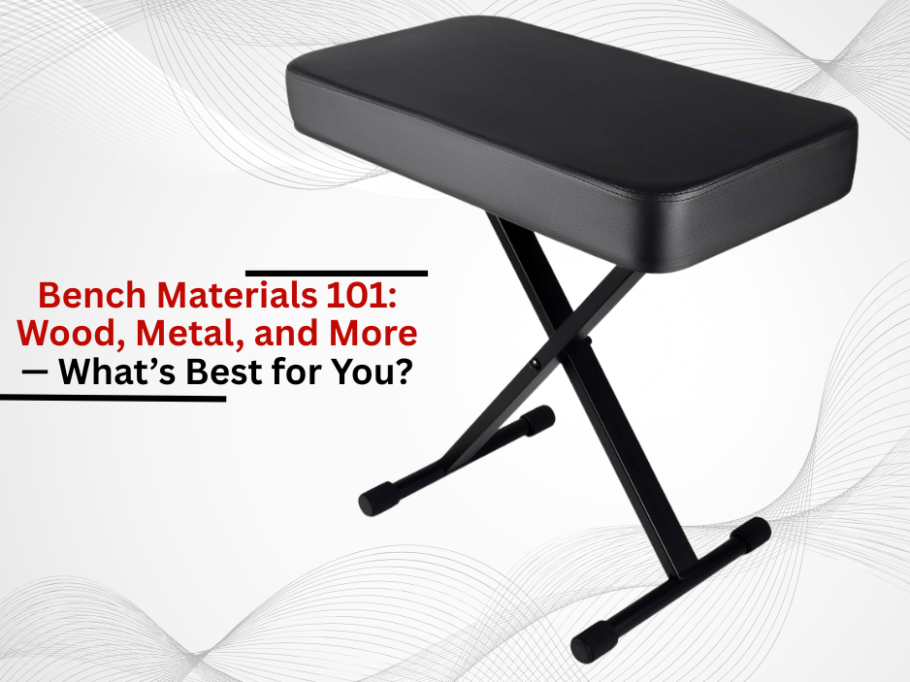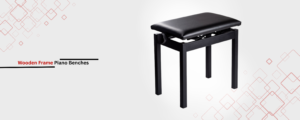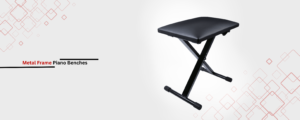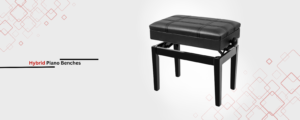The different anatomy of a piano bench affects its comfort, durability, and aesthetic value. In most cases, this is often neglected. Bench designs range from the classic hardwood to modern metal frameworks. Each type has clear pros and cons. Choosing one requires balancing preferences and needs. In this article, we will analyze the most common bench materials, their features, best application for use, and what factors need to be considered.
To know more, read: The Importance of Proper Seating Posture for Pianists
Wooden Piano Benches
Hardwoods: Durability and Tradition:
Oak, maple, and walnut are known for their eye-catching appeal and strength, making them prime choices for wooden benches. These benches never warp or scratch, making them ideal for acoustic pianos placed in formal settings. Unfortunately, these types of wood are heavy, which makes them hard to lift and transport. Untreated wood also has a tendency to expand when placed in humid environments. Most opt for oil or laminates to improve moisture resistance.
Softwoods and Engineered Wood:
Softwood types like pine and cedar are inexpensive and easy to transport. Softwood also assists in lowering the average price of a bench. The downside is they scratch or dent easily. Engineered wood like MDF or plywood is often accused of lacking structural integrity. While this is true when compared to solid hardwoods, it does provide better value at lower costs. These materials are typically used in temporary or budget setups, allowing them to be more versatile.
Metal-Framed Benches
Steel: Strength and Industrial Aesthetics:
Steel benches are usually constructed with padded seats. These are a popular option for digital pianos or staged performances since the attendee can rest in a seat, which may accommodate more than 600 lbs. The rust powder-coated finish aids in preventing it; however, the rigidity of the material can transfer vibrations, causing an issue in playability. The portable designs have foldable steel frames, which do not offer much in acoustic optimization but sacrifice that for convenience.
Aluminum: Lightweight Versatility:
The benches, which use aluminum, are ideal for touring musicians. That is because the frames are significantly lighter than those built with steel. Coatings of anodized aluminum protect them from corrosion. However, these more streamlined designs may suit modern studios but are also more fragile.
Need this in bulk? You can get this from wholesale – piano bench
If you need this at the best prices, you might check out this new platform – piano bench
Hybrid and Alternative Materials
Plastic and Composite Benches:
Benches that have been designed through injection molding have the advantage of being waterproof, budget-friendly, and light. However, you may need to compromise on their stability for rigorous playing. Outdoor or school settings often reinforce polymers with fiberglass, which increases durability. Both materials seem to lack aesthetic appeal.
Upholstered and Padded Options:
For long practice sessions, benches that use memory foam and high-density padding covered in leather or fabric focus on providing comfort. There is no denying that upholstery can lead to tears and stains, but removable covers allow great practicality for shared places, making simple washing easy.
Critical Elements for Selection of Materials
Portability vs. Longevity:
The use of hardwoods or steel ensures the longevity of furniture but greatly impedes mobility. Lightweight aluminum or plastic allows for frequent transport but, at times, can compromise stability and structural integrity.
Aesthetic Balance:
Wood finishes blend well with traditional interiors, whereas metals or minimalist designs match with modern spaces. Upholstered benches add some texture but require color coordination with existing decor.
Environmental Considerations:
Moisture-resistant finishes are necessities in humid climates, while floors having extreme temperature fluctuations require stable materials such as engineered wood or coated metals. Use of UV-resistant composites or treated metals is essential for outdoor purposes.
Relatively Low Cost vs. Long-Term Investment:
Though premium metals and hardwoods have higher initial costs, they last for decades. Budget materials such as plastic or softwoods greatly reduce initial expenses but will require replacement sooner, increasing costs over time.
Conclusion
Ultimately, the material for a piano bench is based upon personal preference, whether that be tradition, portability, or comfort, with lower cost essential options served by Roland, 5 Core, Donner, and Gleam. Understanding the advantages and disadvantages of each option allows musicians to build a set of benches that will marry with their instruments, spaces, and lifestyle.




